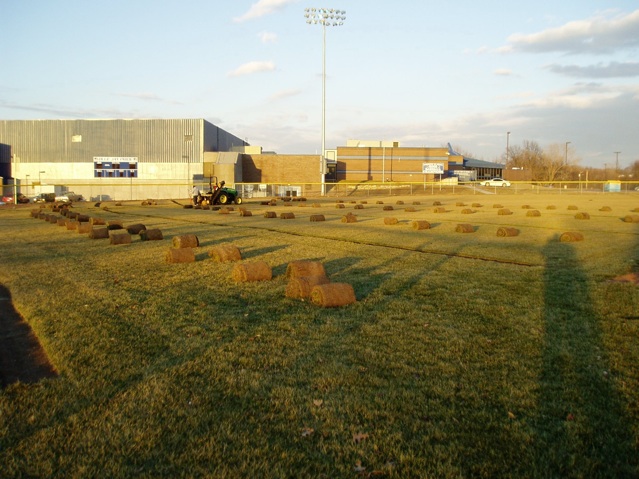Natural Grass Field Drainage

Below we will talk about the typical design we used for each natural grass field today.
Drainage systems can be installed on new and existing sports fields with very little disruption or damage to the playing surface. A waterlogged field can be out of action for as long as 2 weeks after a good 1” rain fall and maybe longer if the field is not sloped correctly. To solve this problem, drainage systems can be installed at any time with no disruption to scheduled events.

A typical drainage system for a baseball field is to install 4” perforated drainage tile at 20’ centers with one following parallel to the infield arch, one around the pitches mound and one along the infield grass edge. You will notice in the drawing below how we usually correct or prevent the drainage problems on a baseball field. The blue lines represents the drainage tile. The amount of drainage lines and length of each tile will depend on the size and depth of the outfield.

A typical drainage system for a soccer field is to install 4” perforated drainage tile at 15’ centers in a herringbone pattern 45 degrees to the center crown and dumping into the permitter drain around the outside of the field. You will notice in the drawing below how we usually correct or prevent the drainage problem on a soccer field.

A typical drainage system for a football field is to install 4” perforated drainage tile at 30’ centers running parallel to the center crown and emptying into the permitter drain around the outside of the field. You will notice in the drawing below how we usually correct or prevent the drainage problem on a football field. The blue lines represents the drainage tile and the red line is the crown in the center of the field.

You will see in the movie below our “ No Spoils” trencher in action. This unit is laser controlled with a tolerance of less than a 1/16th of an inch. It can trench up to 4’ deep and 8” wide. All the spoils are picked up by the machine, loaded in a utility cart and hauled off to a dumping location. This is by far the most advanced drainage trencher made.
On existing fields, the ideal way to drain the field is to cut the sod, roll it up so the drainage work can be done, then relay the sod, leaving virtually no indication any construction had be done as shown in the pictures below.


MIdwest Drainage LLC
Lee’s Summit, Missouri, 64086
Email alan@midwestdrainage.com
Ph# 816-918-9445 Fax# 816-525-2124
